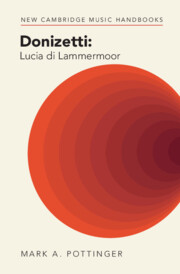Refine search
Actions for selected content:
3385747 results
Contributors
-
- Book:
- Kant on Language
- Published online:
- 19 September 2025
- Print publication:
- 09 October 2025, pp vii-vii
-
- Chapter
- Export citation
References
-
- Book:
- Re-Imagining Supply Chain Management
- Published online:
- 22 September 2025
- Print publication:
- 09 October 2025, pp 231-251
-
- Chapter
- Export citation

Science and Humanism
- Knowledge, Values, and the Common Good
- Coming soon
-
- Expected online publication date:
- October 2025
- Print publication:
- 23 October 2025
-
- Book
- Export citation
Select Bibliography
-
- Book:
- British Law and Literature in the Long Eighteenth Century
- Published online:
- 19 September 2025
- Print publication:
- 09 October 2025, pp 255-264
-
- Chapter
- Export citation
8 - Liturgy and the Sacraments
- from Part II - The Celebration of the Liturgy
-
-
- Book:
- The Cambridge Companion to Christian Liturgy
- Published online:
- 19 September 2025
- Print publication:
- 09 October 2025, pp 133-154
-
- Chapter
- Export citation
4 - Assemblages of Inequalities and Resilience Ideologies in Urban Planning
-
-
- Book:
- Racial Justice in American Land Use
- Published online:
- 19 September 2025
- Print publication:
- 09 October 2025, pp 99-123
-
- Chapter
- Export citation
11 - Drawing from AMR Experience for Better Prevention, Preparedness, and Response to Complex Health Threats under a One Health Approach
- from Part II - One Health and Contemporary Legal Structures
-
-
- Book:
- The Cambridge Handbook of One Health and the Law
- Published online:
- 25 September 2025
- Print publication:
- 09 October 2025, pp 157-180
-
- Chapter
-
- You have access
- HTML
- Export citation
5 - Lessons from Existing International Institutions to Represent Vulnerable Groups
- from Part II - International Law and Institutions
-
- Book:
- Representing Future Generations
- Published online:
- 19 September 2025
- Print publication:
- 09 October 2025, pp 116-142
-
- Chapter
-
- You have access
- HTML
- Export citation
4 - One Health and Pathogen Sharing
- from Part I - One Health in Existing Legal Structures
-
-
- Book:
- The Cambridge Handbook of One Health and the Law
- Published online:
- 25 September 2025
- Print publication:
- 09 October 2025, pp 40-54
-
- Chapter
-
- You have access
- HTML
- Export citation
Index
-
- Book:
- Escaping Justice
- Published online:
- 19 September 2025
- Print publication:
- 09 October 2025, pp 211-218
-
- Chapter
-
- You have access
- Open access
- HTML
- Export citation
1 - Introduction
-
-
- Book:
- Human-AI Interaction and Collaboration
- Published online:
- 19 September 2025
- Print publication:
- 09 October 2025, pp 1-13
-
- Chapter
-
- You have access
- HTML
- Export citation
Preface
-
- Book:
- The Experience of Work in Early Modern England
- Published online:
- 19 September 2025
- Print publication:
- 09 October 2025, pp xiii-xiv
-
- Chapter
-
- You have access
- Open access
- HTML
- Export citation
Index
-
- Book:
- A Datafied Mind
- Published online:
- 27 September 2025
- Print publication:
- 09 October 2025, pp 215-217
-
- Chapter
- Export citation
5 - Innovative Business Development: Supply Chain Finance
- from II - Four Strategies of Supply Chain Management
-
- Book:
- Re-Imagining Supply Chain Management
- Published online:
- 22 September 2025
- Print publication:
- 09 October 2025, pp 100-119
-
- Chapter
- Export citation
Chapter 3 - How Advantaged Groups Create, Perpetuate, and Grow Their Advantage
- from Part I - Intergroup Relations and Group Processes
-
- Book:
- The Psychology of System Change and Resistance to Change
- Published online:
- 23 September 2025
- Print publication:
- 09 October 2025, pp 51-70
-
- Chapter
- Export citation

Donizetti: Lucia di Lammermoor
- Coming soon
-
- Expected online publication date:
- October 2025
- Print publication:
- 23 October 2025
-
- Book
- Export citation
5 - Resistance to the Epistemology of the Secret of International Law
-
- Book:
- The Epistemology of the Secret
- Published online:
- 23 July 2025
- Print publication:
- 09 October 2025, pp 117-144
-
- Chapter
- Export citation
8 - Biodiversity Conservation and Human Rights
-
- Book:
- International Environmental Law
- Published online:
- 19 September 2025
- Print publication:
- 09 October 2025, pp 247-284
-
- Chapter
- Export citation
Bibliography
-
- Book:
- Escaping Justice
- Published online:
- 19 September 2025
- Print publication:
- 09 October 2025, pp 189-210
-
- Chapter
-
- You have access
- Open access
- HTML
- Export citation
3 - Supply Chain Risks and Uncertainties
- from I - Anatomy of Supply Chain Management
-
- Book:
- Re-Imagining Supply Chain Management
- Published online:
- 22 September 2025
- Print publication:
- 09 October 2025, pp 51-74
-
- Chapter
- Export citation
